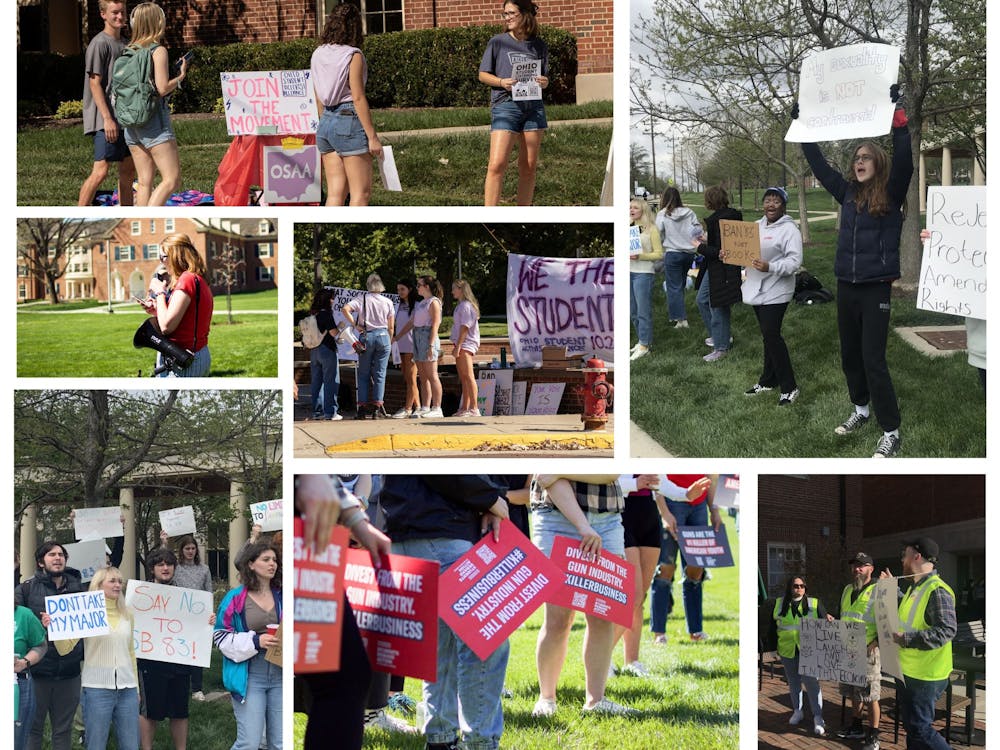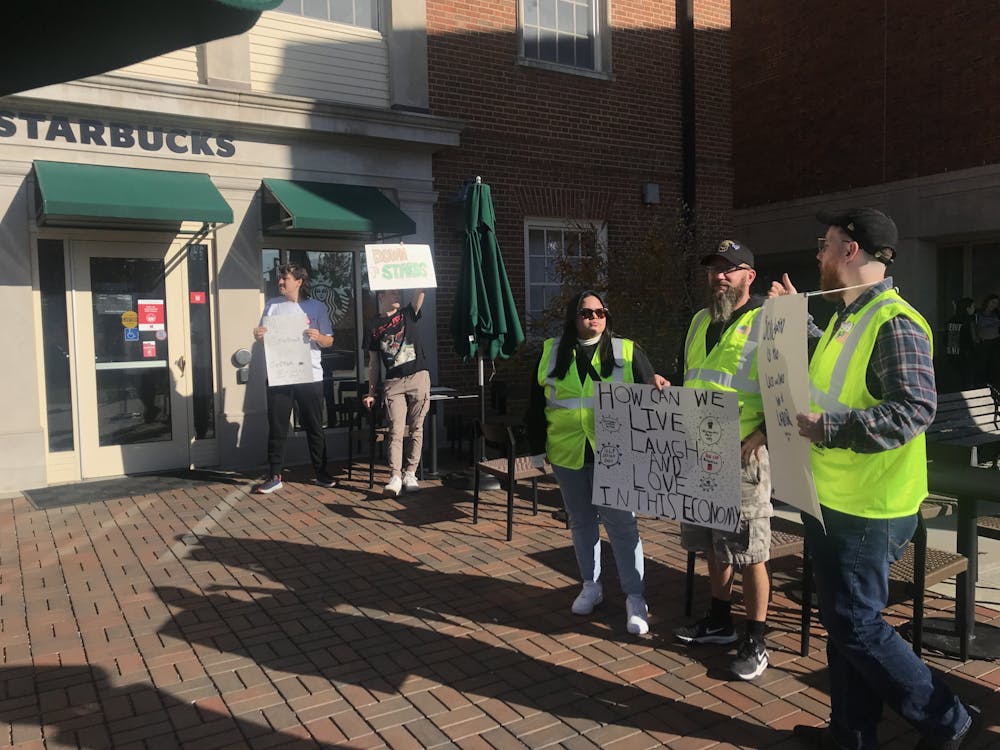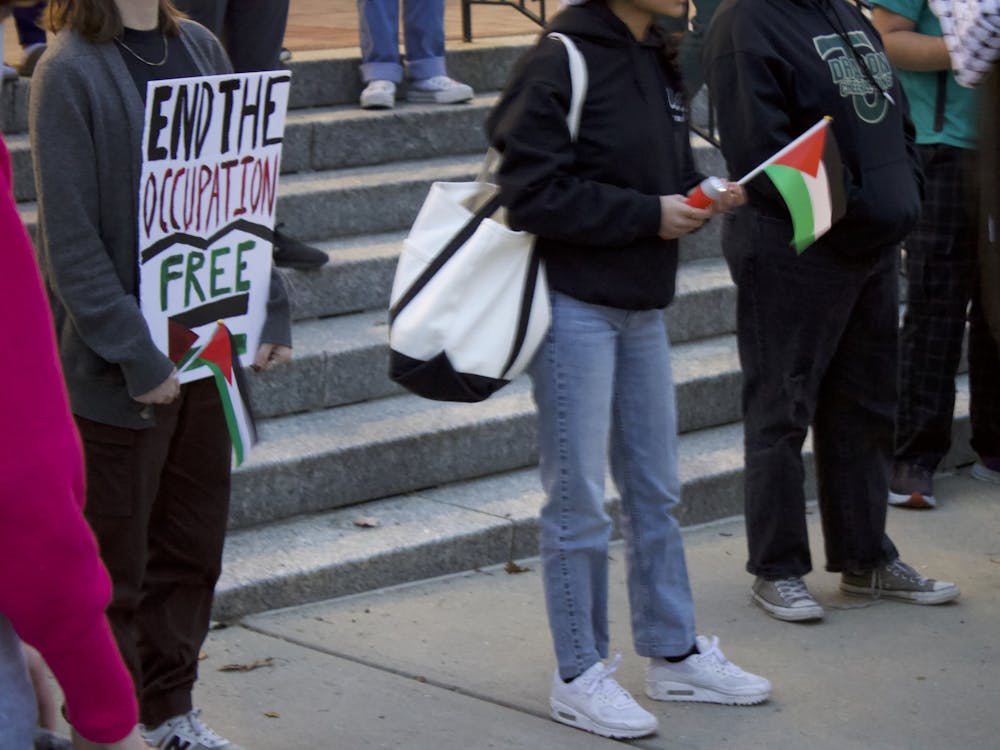Fifty years ago, on April 15, 1970, over 150 Miami students were arrested after occupying Rowan Hall in protest of the Vietnam War. The protest was one of thousands on college campuses across the country at the time and preceded the Kent State shootings by only a few weeks.
This year, in an effort to bring the story to life, two professors, Andy Rice, an assistant professor in Media, Journalism and Film, and Eric Hodgson, an assistant professor in the Armstrong Institute for Interactive Media Studies, will be teaching a series of classes and labs about the protest in the hopes of creating an augmented reality display in the spring. The display would be set up in Armstrong Student Center, where Rowan Hall used to stand, and would allow Miami students to use an app to read about and see photos from the protests.
Rice wants to make this piece of Miami history more accessible to students today through the class and the display in the spring.
"I didn't see a lot of evidence that this history has been considered," Rice said. "I would like to make this history more accessible for conversation."
The Rowan Hall protest began as a rally on Miami's campus in protest of the Vietnam War. These kinds of protests were fairly common around the country at the time and had occurred on Miami's campus before, though usually with only a few hundred students in attendance.
The April 15 rally, which took place outside of Roudebush Hall, had between 300 and 500 students in attendance, with many coming and going throughout the afternoon. The rally was peaceful and even shifted its focus away from Vietnam to the demands of the Black Student Action Association, a group that was advocating for more representation and equality on Miami's campus.
Around 4 p.m. that afternoon as the rally was being adjourned by its organizers, Miami senior Alan "Dusty" Steytler grabbed a microphone and proposed that the rally attendees march on the ROTC building, Rowan Hall to better show their protest against Vietnam and militarism. Around 50 students followed and broke into Rowan Hall, with more students joining in throughout the evening.
Miami administrators were at the scene almost immediately, urging students to go home, but no physical action was taken to remove students from the building immediately. The first three to four hours of the occupation had turned into less of a protest and more of a party-students ordered pizza to the hall and had a band set up. However, as time went on, Miami administrators became more adamant about students leaving, while students doubled down on their decision to stay, urging anyone who wasn't prepared for a true sit-in to go home.
Around 8:30 p.m. that evening, Robert Etheridge, the Vice President for Student Affairs at the time, arrived and ordered students to leave. Student protest leaders refused and instead gave Etheridge a list of demands that they wanted met first, including the elimination of ROTC on Miami's campus, Miami's agreement to the demands of the Black Student Action Association and a promise that no students participating in the occupation would be punished.
The confrontation continued when Etheridge refused, threatening expulsion of all the students at the rally if they didn't leave, though he offered students the option to relocate to the Hall Auditorium if they wanted to continue their sit-in and discuss their demands further with the university.
Students again refused.
At 9:45 p.m., Etheridge returned and told students they would be expelled and police were on the way if they didn't leave. Around half the students at the occupation did leave at this point, but nearly 200 remained, and around 10:10 police arrived and chaos ensued. Some students were physically dragged out of the hall, while tear gas and mace were used inside the building as well to force students out. Students were arrested as they came out of the building.
Enjoy what you're reading?
Signup for our newsletter
While Rice thinks the Rowan Hall protest itself is an important piece of Miami history, he hopes that his class and the final display will help students recognize the relationship between young people and activism that persists today.
"It's a good way to think about the relationship between youth and protest more broadly," Rice said. "You can think about a whole number of social movements that are cutting edge issues around the world right now being led by young people, but the 60s' was really the era where that idea and that set of associations came to be formed."



